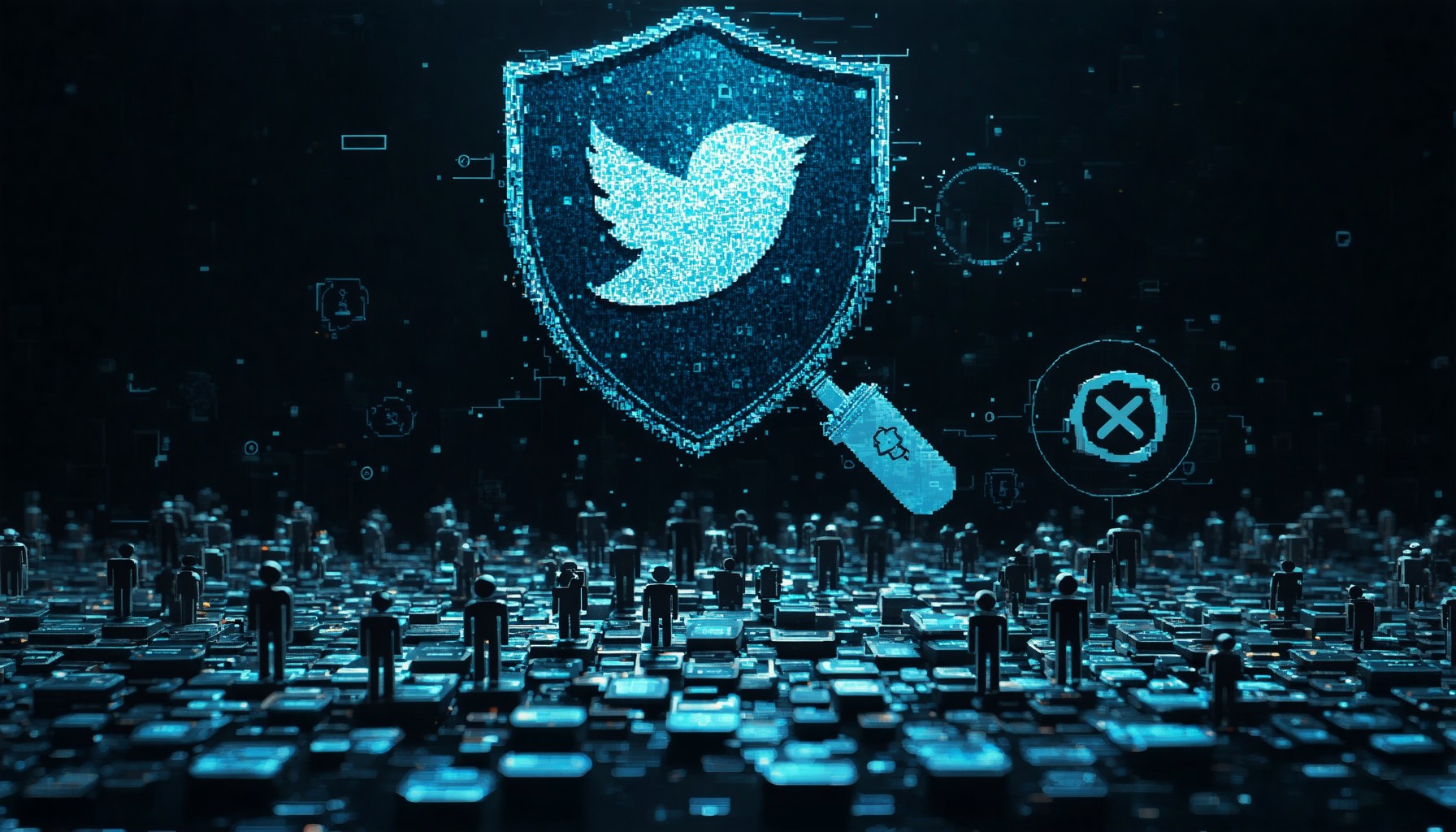Key Takeaways
- Understanding Response Bots: Automated response bots are essential for effective communication in digital platforms, streamlining customer interactions and enhancing user experience.
- Benefits of Bot Responses: These bots provide instant customer support, e-commerce assistance, and social engagement, significantly reducing wait times and improving satisfaction.
- Identifying Bots: Recognizing automated messages involves observing response patterns, timing, and contextual understanding, helping users distinguish between humans and bots.
- Legal Implications: Bot spamming is illegal, with regulations like the CAN-SPAM Act ensuring consumers are protected from unsolicited messages.
- Future Innovations: Advancements in AI and natural language processing will lead to more sophisticated bots capable of personalized interactions, enhancing communication trends.
In today’s fast-paced digital landscape, understanding the response bot is crucial for effective communication. These automated response bots play a significant role in how we interact online, from customer service inquiries to social media engagements. This article will delve into the essence of what a bot response is, providing clarity on its meaning and functionality. We will explore real-world examples of bot responses in everyday scenarios, highlighting the best features and use cases that make them invaluable. Additionally, we will address pressing questions such as the legality of bot spamming and how to effectively report it. As we navigate through identifying automated messages and distinguishing between human and bot interactions, we will also look ahead to the future of response bots, examining innovations that are shaping communication trends. Join us as we uncover the complexities and benefits of response bots, enhancing your understanding of this pivotal technology.
What is a bot response?
A bot response refers to the automated replies generated by software programs, commonly known as bots, that interact with users in various digital platforms. These responses are designed to simulate human conversation and can be found in applications such as customer service chatbots, social media platforms, and messaging services.
Understanding the Meaning of Bot Responses
A bot response is an automated message created by a chatbot or virtual assistant to address user inquiries or provide information. These responses can range from simple greetings to complex answers involving data retrieval and processing. The functionality of bot responses is crucial in enhancing user experience across various platforms, including Messenger Bot, where automated responses streamline communication.
The Role of Automated Response Bots in Communication
Automated response bots play a significant role in modern communication by offering:
- Customer Support: Bots are widely used in customer service to provide instant responses to frequently asked questions, reducing wait times and improving user satisfaction.
- E-commerce Assistance: Bots can guide customers through the purchasing process, offering product recommendations based on user preferences, which enhances the shopping experience.
- Social Interaction: Bots engage users on social media, providing entertainment or information, such as news updates or trivia, thereby increasing user engagement.
By leveraging advanced technologies like AI response bots, businesses can ensure efficient communication and improved customer interactions. For more insights into the effectiveness of chatbots, explore Understanding Bot Responses.

What is an example of a bot response?
Bot Responses Examples in Everyday Scenarios
An example of a bot response can be illustrated through a customer service chatbot interaction. For instance, when a user inquires about the status of their order, the bot might respond with:
“Thank you for reaching out! Your order #12345 was shipped on March 1, 2023, and is expected to arrive by March 5, 2023. You can track your shipment using the following link: [tracking link]. If you have any further questions, feel free to ask!”
This response is concise, informative, and directly addresses the user’s query, showcasing the bot’s ability to provide real-time information. Chatbots like those used in Messenger can enhance customer engagement by delivering instant responses, improving user experience, and streamlining communication. According to a report by Gartner, by 2025, 75% of customer service interactions will be powered by AI, highlighting the growing reliance on automated responses in various sectors.
Best Response Bot Features and Use Cases
When considering the best response bots, several features stand out. A robust automated response bot should include:
- Real-Time Interaction: The ability to respond instantly to user inquiries, enhancing engagement.
- Multilingual Support: Communicating in various languages to cater to a global audience.
- Integration Capabilities: Seamless integration with platforms like Discord and Telegram for broader reach.
- Analytics: Providing insights into user interactions to optimize future responses.
For example, a Brain Pod AI chatbot can be utilized in e-commerce settings to assist customers with product inquiries, order tracking, and even facilitating purchases through automated responses. This not only streamlines the shopping experience but also increases conversion rates.
Incorporating features like these into your response bot can significantly enhance user satisfaction and operational efficiency, making it a valuable tool for any business.
Is Bot Spamming Illegal?
Yes, bot spamming is illegal in many jurisdictions. Bot spamming refers to the use of automated programs (bots) to send unsolicited messages or content, often for the purpose of advertising or phishing. This practice violates various laws and regulations designed to protect consumers and maintain the integrity of online communication.
Legal Implications of Bot Spamming
1. Legal Framework: In the United States, the CAN-SPAM Act of 2003 regulates commercial email and prohibits misleading headers, deceptive subject lines, and the sending of unsolicited emails. Violations can result in significant fines. Similarly, the Telephone Consumer Protection Act (TCPA) restricts automated calls and texts without prior consent.
2. International Regulations: Many countries have their own laws against spam. For example, the General Data Protection Regulation (GDPR) in the European Union imposes strict rules on consent and data protection, making unsolicited communications illegal unless explicit consent is obtained.
3. Consequences of Bot Spamming: Engaging in bot spamming can lead to legal repercussions, including fines and lawsuits. Additionally, companies found to be using bots for spamming can suffer reputational damage and loss of customer trust.
4. Ethical Considerations: Beyond legality, bot spamming raises ethical concerns regarding user experience and trust. Consumers expect transparent and respectful communication from brands, and spamming undermines this relationship.
5. Best Practices: To avoid legal issues, businesses should focus on legitimate marketing strategies, such as obtaining consent from users before sending messages and providing clear opt-out options. Utilizing tools like Messenger Bots can enhance customer engagement when used responsibly and ethically, ensuring compliance with relevant laws.
How to Report Bot Spam Effectively
Reporting bot spam is crucial for maintaining a safe online environment. Here are effective steps to take:
- Identify the Source: Gather information about the bot, including the account name, message content, and any relevant timestamps.
- Use Reporting Tools: Most platforms, including Facebook and Discord, have built-in reporting features. Use these tools to report spam accounts or messages directly.
- Contact Support: If the spam persists, reach out to the platform’s customer support for further assistance. Provide them with all the gathered information for a more effective response.
- Educate Others: Share your experience with friends and colleagues to raise awareness about bot spam and encourage them to report similar incidents.
For more insights on how to navigate the complexities of bot interactions, consider exploring resources like Exploring Smart AI Bots.
How to Tell if You’re Being Texted by a Bot?
Identifying whether you’re communicating with a bot can be crucial for ensuring meaningful interactions. Here are key indicators to help you discern automated messages from genuine human responses.
Identifying Automated Messages: Key Indicators
To determine if you’re being texted by a bot, consider the following indicators:
- Response Patterns: Bots often have predictable and repetitive response patterns. If replies seem formulaic or lack personalization, it may indicate a bot.
- Timing of Responses: Bots can respond almost instantly, regardless of the time of day. If you receive immediate replies at odd hours, this could be a sign of automated messaging.
- Lack of Contextual Understanding: Bots may struggle with nuanced questions or complex conversations. If the responses seem off-topic or fail to address your queries meaningfully, it’s likely a bot.
- Generic Replies: If the messages are overly generic or do not reference previous interactions, this can be a strong indicator of a bot. Bots often use scripted responses that lack depth.
- Inability to Engage in Small Talk: Bots typically have limited conversational abilities. If the conversation feels one-sided or lacks the flow of natural dialogue, it may be a bot.
- Use of Emojis and GIFs: While some bots can use emojis, they often do so inappropriately or excessively. If the use of emojis feels forced or out of context, it may suggest a bot.
- Links and Promotions: If the messages frequently contain links or promotional content without context, it could indicate a bot designed for marketing purposes.
For further insights, consider researching the capabilities of advanced messaging systems like Messenger Bots, which utilize AI to simulate human conversation. Understanding these technologies can help you better identify automated interactions.
Tools to Detect Bot Messages on Platforms like Discord
Detecting bots on platforms such as Discord can enhance your communication experience. Here are some effective tools and methods:
- Bot Detection Bots: Utilize dedicated bots designed to identify and manage other bots within Discord servers. These tools can help you filter out automated accounts.
- Server Settings: Adjust your server settings to limit bot permissions. This can help reduce unwanted automated interactions.
- User Behavior Analysis: Monitor user behavior patterns. Bots often exhibit consistent activity that differs from human users, such as frequent posting or repetitive messages.
- Community Reports: Encourage community members to report suspicious accounts. Collective vigilance can help identify and remove bots effectively.
By employing these strategies and tools, you can enhance your ability to distinguish between human and bot interactions, ensuring a more authentic communication experience on platforms like Discord.

What is an example of a bot?
An example of a bot is a chatbot, which is a software application designed to simulate human conversation through text or voice interactions. One popular example of a chatbot is the Messenger Bot, which operates within the Facebook Messenger platform. Messenger Bots can assist users by providing customer service, answering frequently asked questions, and facilitating transactions. Chatbots utilize artificial intelligence (AI) and natural language processing (NLP) to understand user queries and respond appropriately. They can be programmed to handle a variety of tasks, from simple inquiries to complex problem-solving. According to a report by Gartner, by 2025, 75% of customer service interactions will be powered by AI, highlighting the growing importance of bots in enhancing user experience and operational efficiency.
In addition to Messenger Bots, other notable examples include:
- Slack Bots: These bots help streamline communication within teams by automating tasks, sending reminders, and integrating with other applications.
- WhatsApp Bots: Used for customer engagement, these bots can send notifications, provide support, and even process orders directly through the messaging app.
- Discord Bots: Commonly used in gaming communities, these bots can manage server activities, moderate chats, and provide entertainment through games and music.
The implementation of bots, such as chatbots, is becoming increasingly prevalent across various industries, demonstrating their versatility and effectiveness in improving user interaction and satisfaction. For further reading on the impact of bots in customer service, refer to the article by McKinsey & Company, which discusses the transformative role of AI in business operations.
Exploring Different Types of Bots: From Discord to Telegram
When we explore the landscape of automated response bots, we find a variety of platforms that cater to different user needs. For instance, Discord bots are designed to enhance community engagement by automating tasks such as moderation and user interaction. These bots can provide auto responses, manage server activities, and even entertain users with games.
On the other hand, Telegram bots offer similar functionalities, allowing users to receive updates, manage tasks, and engage in conversations. The versatility of these bots makes them essential tools for both personal and business communication, as they can streamline processes and enhance user experiences.
The Evolution of Automated Response Bots in Customer Service
The evolution of automated response bots has significantly transformed customer service. Initially, bots were limited to simple query responses. However, advancements in AI and NLP have led to the development of sophisticated automated response bots that can handle complex interactions. For example, the AI Chat Assistant from Brain Pod AI exemplifies how modern bots can provide personalized support, enhancing customer satisfaction and operational efficiency.
As businesses increasingly adopt these technologies, the future of customer service looks promising, with bots playing a crucial role in delivering timely and effective responses. The integration of features such as multilingual support and advanced analytics further enhances their capabilities, making them indispensable in today’s digital landscape.
How do you tell if you’re arguing with a bot?
To determine if you’re arguing with a bot, consider the following indicators:
- Language and Communication Style: Bots often use language that appears unnatural or overly formal. Look for repetitive phrases, lack of nuance, or responses that seem scripted. For example, a bot may provide generic answers without addressing specific details of your argument.
- Response Time: Bots typically respond almost instantaneously. If you notice a delay that seems inconsistent with the flow of conversation, it may indicate you’re interacting with a human.
- Context Awareness: Bots struggle with maintaining context in conversations. If the responses seem disconnected or fail to acknowledge previous messages, it could be a sign of a bot.
- Emotional Intelligence: Bots lack genuine emotional responses. If the replies seem overly logical or devoid of empathy, this could indicate a bot is involved.
- Error Patterns: While bots can generate text in multiple languages, they may still exhibit grammatical or syntactical errors that are atypical for a fluent speaker. Look for odd phrasing or translations that don’t quite fit the context.
- Complexity of Responses: Bots may falter when faced with complex questions or nuanced topics. If the responses are overly simplistic or fail to engage with the depth of the argument, it may suggest you’re dealing with a bot.
- Use of Emojis and Slang: Bots often avoid using slang or emojis, or they may use them inappropriately. If the conversation lacks these elements or uses them in a way that feels forced, it could indicate a bot.
For further insights on identifying bots, refer to resources like the Pew Research Center’s studies on online interactions and AI communication patterns. Understanding these characteristics can help you navigate conversations more effectively and discern between human and bot interactions.
Strategies to Differentiate Between Human and Bot Responses
To effectively differentiate between human and bot responses, consider implementing the following strategies:
- Ask Open-Ended Questions: Engage the other party with questions that require thoughtful responses. Bots often struggle to provide meaningful answers to complex inquiries.
- Monitor Conversational Flow: Pay attention to how the conversation progresses. A human will typically adapt their responses based on the context, while a bot may provide disjointed replies.
- Use Humor or Sarcasm: Incorporating humor or sarcasm can help reveal whether you’re interacting with a bot, as they often lack the ability to understand or respond appropriately to such nuances.
- Check for Personalization: Humans are more likely to personalize their responses based on previous interactions. If the replies feel generic or lack personal touch, it may indicate a bot.
By employing these strategies, you can enhance your ability to identify whether you’re conversing with a bot or a human, leading to more meaningful interactions.
The Future of Response Bots
Innovations in Automated Response Technology
The future of response bots is set to be shaped by groundbreaking innovations in automated response technology. As artificial intelligence continues to evolve, we can expect response bots to become increasingly sophisticated, offering more personalized interactions. For instance, advancements in natural language processing (NLP) will enable bots to understand context better, allowing for more nuanced conversations. This means that users will experience fewer generic responses and more tailored interactions that feel human-like.
Additionally, the integration of machine learning algorithms will empower response bots to learn from past interactions, improving their ability to predict user needs and preferences. This capability is particularly beneficial in platforms like Discord and Telegram, where community engagement is crucial. Bots will not only respond to inquiries but also proactively engage users based on their behavior and interests, enhancing overall user experience.
Moreover, innovations such as sentiment analysis will allow bots to gauge user emotions and adjust their responses accordingly. This technology can significantly improve customer service interactions, as bots will be able to identify frustrated users and escalate issues to human agents when necessary. As a result, businesses can maintain a high level of customer satisfaction while optimizing operational efficiency.
The Impact of AI Response Bots on Communication Trends
AI response bots are fundamentally transforming communication trends across various platforms. With the rise of automated response bots, businesses are witnessing a shift in how they interact with customers. For example, the use of automated response bots on platforms like Facebook and Instagram has streamlined customer service processes, allowing for immediate responses to inquiries. This shift not only enhances user engagement but also reduces the workload on human agents.
Furthermore, the growing reliance on response bots is leading to the emergence of new communication norms. Users are becoming accustomed to receiving instant replies, which raises expectations for response times across all digital interactions. As a result, businesses that leverage advanced response bots, such as Messenger Bot, are better positioned to meet these expectations and maintain a competitive edge.
In addition, the multilingual capabilities of AI response bots are breaking down language barriers, enabling businesses to reach a global audience. This trend is particularly relevant for companies utilizing platforms like Messenger Bot, which can communicate in various languages, ensuring inclusivity and accessibility for users worldwide.
As we look to the future, the integration of AI response bots will continue to shape communication strategies, driving efficiency and enhancing user experiences across digital platforms.




